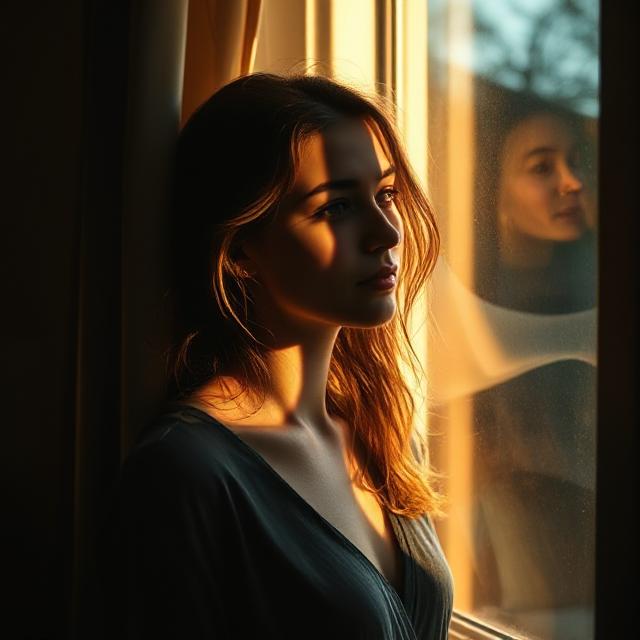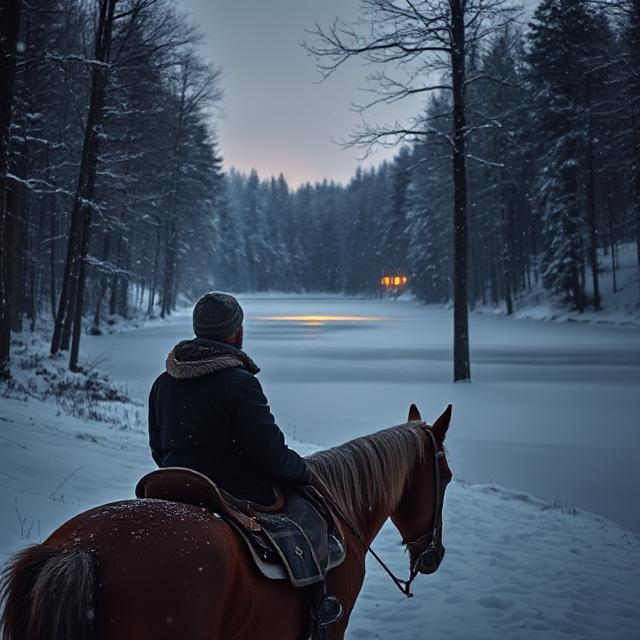Discover Michael Rosen’s playful poem The News with full text, summary, line-by-line meaning, 20 short and 20 long questions with answers, analysis, FAQs, and easy study notes for class 8 students.
Table of Contents
📖 Full Poem: The News by Michael Rosen
Here is The News:
‘Two incredible shoes.
Two incredible shoes.
That’s The News.
When it rains
they walk down drains.
They glow
in the snow.
They grizzle
in a drizzle.
They sneeze
in a breeze.
They get warm
in a storm.
They go soggy
when it’s foggy.
They’ve even hissed
in a mist.
But
(sad to say)
there came a terrible frost.
This is what happened:
they got lost.’
That was The News.
Two incredible shoes.
Two incredible shoes.
That was The News.
The Poem ”The News by Michael Rosen” + Translations (line by line)
Below, each English line is followed by translations in Bangla, Spanish, Portuguese, and French. The translations try to preserve sense and a bit of poetic feel.
Here is The News:
‘Two incredible shoes.
Two incredible shoes.
That’s The News.
- English: Here is The News:
- Bangla: “এখানে সংবাদ”
- Spanish: “Aquí está la noticia:”
- Portuguese: “Aqui está a notícia:”
- French: “Voici la nouvelle :”
- English: ‘Two incredible shoes.
- Bangla: “দুটি অত্যাশ্চর্য জুতা”
- Spanish: “Dos zapatos increíbles”
- Portuguese: “Dois sapatos incríveis”
- French: “Deux chaussures incroyables”
- English: Two incredible shoes.
- Bangla: “দুটি অত্যাশ্চর্য জুতা”
- Spanish: “Dos zapatos increíbles”
- Portuguese: “Dois sapatos incríveis”
- French: “Deux chaussures incroyables”
- English: That’s The News.
- Bangla: “সেই হলো সংবাদ।”
- Spanish: “Eso es la noticia.”
- Portuguese: “Isso é a notícia.”
- French: “C’est la nouvelle.”
When it rains
they walk down drains.
- English: When it rains
- Bangla: “যখন বৃষ্টি হয়”
- Spanish: “Cuando llueve”
- Portuguese: “Quando chove”
- French: “Quand il pleut”
- English: they walk down drains.
- Bangla: “তারা নর্দমায় হাঁটে।”
- Spanish: “caminan por las alcantarillas.”
- Portuguese: “caminham pelos esgotos.”
- French: “ils marchent dans les égouts.”
They glow
in the snow.
- English: They glow
- Bangla: “তারা জ্বলে ওঠে”
- Spanish: “brillan”
- Portuguese: “eles brilham / resplandecem”
- French: “ils brillent”
- English: in the snow.
- Bangla: “বরফে।”
- Spanish: “en la nieve.”
- Portuguese: “na neve.”
- French: “dans la neige.”
They grizzle
in a drizzle.
- English: They grizzle
- Bangla: “তারা গর্জন করে”
- Spanish: “gruñen / mascullan”
- Portuguese: “rosnam / resmungam”
- French: “ils grondent”
- English: in a drizzle.
- Bangla: “মৃদু বৃষ্টিতে।”
- Spanish: “con llovizna.”
- Portuguese: “com garoa.”
- French: “dans une bruine.”
They sneeze
in a breeze.
- English: They sneeze
- Bangla: “তারা ছুঁট্ করে” *(meaning “they sneeze”) *
- Spanish: “estornudan”
- Portuguese: “espirram”
- French: “ils éternuent”
- English: in a breeze.
- Bangla: “একটি হাওয়ায়।”
- Spanish: “con la brisa.”
- Portuguese: “na brisa.”
- French: “dans la brise.”
They get warm
in a storm.
- English: They get warm
- Bangla: “তারা উষ্ণ হয়”
- Spanish: “se calientan”
- Portuguese: “eles ficam quentes”
- French: “ils s’échauffent”
- English: in a storm.
- Bangla: “ঘূর্ণিঝড়ে।”
- Spanish: “en una tormenta.”
- Portuguese: “em uma tempestade.”
- French: “dans une tempête.”
They go soggy
when it’s foggy.
- English: They go soggy
- Bangla: “তারা ভিজে যায়”
- Spanish: “se empapan / se mojan”
- Portuguese: “ficam encharcados / molhados”
- French: “ils deviennent détrempés”
- English: when it’s foggy.
- Bangla: “যখন কুয়াশা থাকে।”
- Spanish: “cuando hay niebla.”
- Portuguese: “quando há neblina.”
- French: “quand il y a du brouillard.”
They’ve even hissed
in a mist.
- English: They’ve even hissed
- Bangla: “তারা এমনকি ফিসফিসও করেছে”
- Spanish: “incluso han siseado”
- Portuguese: “eles até sibilaram”
- French: “ils ont même sifflé”
- English: in a mist.
- Bangla: “কুয়াশায়।”
- Spanish: “en una niebla.”
- Portuguese: “em uma neblina / névoa.”
- French: “dans une brume.”
But
(sad to say)
there came a terrible frost.
This is what happened:
they got lost.’
- English: But
- Bangla: “কিন্তু”
- Spanish: “Pero”
- Portuguese: “Mas” / “Porém”
- French: “Mais”
- English: (sad to say)
- Bangla: “(দুঃখের কথা বলি)”
- Spanish: “(triste decirlo)”
- Portuguese: “(triste dizer)”
- French: “(hélas à dire)” or “(déplaisant à dire)”
- English: there came a terrible frost.
- Bangla: “একটি ভয়ঙ্কর শীত এসেছে।”
- Spanish: “vino una escarcha terrible.”
- Portuguese: “veio uma geada terrível.”
- French: “est venue une gelée terrible.”
- English: This is what happened:
- Bangla: “এটাই হলো যা ঘটল:”
- Spanish: “Esto es lo que pasó:”
- Portuguese: “Isto é o que aconteceu:”
- French: “Voici ce qui s’est passé :”
- English: they got lost.’
- Bangla: “তারা হারিয়ে গেল।”
- Spanish: “se perdieron.”
- Portuguese: “eles se perderam.”
- French: “ils se sont perdus.”
That was The News.
Two incredible shoes.
Two incredible shoes.
That was The News.
- English: That was The News.
- Bangla: “সেই ছিল সংবাদ।”
- Spanish: “Esa fue la noticia.”
- Portuguese: “Essa foi a notícia.”
- French: “C’était la nouvelle.”
- English: Two incredible shoes.
- Bangla: “দুটি অত্যাশ্চর্য জুতা।”
- Spanish: “Dos zapatos increíbles.”
- Portuguese: “Dois sapatos incríveis.”
- French: “Deux chaussures incroyables.”
- English: Two incredible shoes.
- (same translation)
- Bangla: “দুটি অত্যাশ্চর্য জুতা।”
- Spanish: “Dos zapatos increíbles.”
- Portuguese: “Dois sapatos incríveis.”
- French: “Deux chaussures incroyables.”
- English: That was The News.
- Bangla: “সেই ছিল সংবাদ।”
- Spanish: “Esa fue la noticia.”
- Portuguese: “Essa foi a notícia.”
- French: “C’était la nouvelle.”
Paraphrase / Simpler “Story”
Now, in simple words, here’s what the poem is saying:
- The poem pretends that the news is about two amazing shoes.
- These shoes behave in strange, impossible ways depending on weather:
• When it rains, they walk through drains.
• In snow, they glow (give off light).
• In drizzle, they “grizzle” (they growl or complain).
• In a light breeze, they sneeze.
• In a storm, they become warm.
• When foggy, they become soggy (wet).
• In mist, they even hiss. - But then something bad happens: there comes a terrible frost, and as a result they get lost (the shoes disappear / no one knows where they are).
- And that is the “news” — that these two incredible shoes were lost.
So, the poem is playful and imaginative: it treats ordinary shoes as if they were magical creatures, worthy of being news, and gives them strange behaviors in different weather. At the end, the “news” is their disappearance.
Analysis (with literary terms) — in easy words
Here are the important points, explained simply:
| Literary term / element | What it means / how used here | Example or explanation |
|---|---|---|
| Nonsense poem | A poem that uses absurd, impossible, silly ideas to surprise or amuse. | Shoes that glow, sneeze, walk through drains — these are impossible but fun. |
| Repetition | Repeating words or lines to make the poem rhythmic and memorable. | “Two incredible shoes. Two incredible shoes.” repeated. Also “That’s The News.” / “That was The News.” |
| Rhyme & near-rhyme / sound play | Using words that sound alike to create musical quality. | drains / rains, snow / glow, drizzle / grizzle, breeze / sneeze, storm / warm, foggy / soggy / mist / hissed. |
| Personification | Giving human / living qualities to non-living things (shoes). | The shoes sneeze, hiss, become warm, etc. |
| Alliteration / sound echo | Repeating the same beginning sounds to make lines pleasing. | “They go soggy / when it’s foggy” — soggy / foggy have a repeated ‘g’ / ‘g’ sound. |
| Juxtaposition | Placing two contrasting or strange images side by side. | A shoe glowing in snow, or walking down drains in rain — these are contrasting images. |
| Mood / tone | The feeling or attitude the poet gives. | The tone is playful, whimsical, imaginative, a bit surprising. |
| Theme / ideas | What the poem explores or suggests (in your mind). | It shows how language can make ordinary things magical; also it plays with expectation — we expect news to be serious, but here it’s about shoes. It invites us to imagine and delight. |
| Structure / format | How the poem is built, with lines, stanzas, breaks. | It’s short, broken into small lines, often two per couplet. The breaks let us pause and imagine each weather-scene. |
Some deeper thoughts (but in simple terms)
- The poet makes us wonder: Why would shoes sneeze or glow? That surprise makes us smile or think.
- The poem plays with sound — when you read it out loud, the rhymes and echoes are fun to hear.
- The poem is about imagination: it turns something ordinary (shoes) into something magical.
- Also, there is a touch of loss at the end: after all the fun descriptions, they disappear. That gives a little twist — not everything stays magical.
- The title “The News” is ironic — news is usually about big events, but here it’s about shoes — making us think: what counts as news? How do we decide what’s important?
Michael Rosen (the poet) often plays with language itself — he likes to show how words and sounds can surprise us, not just what they mean.
In fact, he once commented that in poems like this, logical meaning is not the main thing. He places images side by side and asks us to make connections in our mind. Michael Rosen
Some tips / things to help you
Look at sound devices: Alliteration, rhyme, assonance (repeating vowel sounds) — see where they appear.
Read it aloud: Because of the rhymes and rhythm, hearing it helps.
Visualize: As you read each line, imagine a pair of shoes doing those strange things in different weather.
Identify rhyme pairs: Try to spot which words rhyme (rain / drains, snow / glow, etc.).
Discuss meaning: Ask: Why shoes? What kind of “news” is this? What does the ending make you feel?
Write your own version: Pick an everyday object (a hat, a pen, a book) and imagine it doing strange things in weather — make it “news.”
✨ 20 Short Questions & Answers
1. Who wrote the poem The News?
Answer: Michael Rosen.
2. What is the poem about?
Answer: Two incredible shoes that behave strangely in different weather.
3. What do the shoes do when it rains?
Answer: They walk down drains.
4. How do the shoes act in the snow?
Answer: They glow.
5. What happens to the shoes in a drizzle?
Answer: They grizzle (complain).
6. What do the shoes do in a breeze?
Answer: They sneeze.
7. How do the shoes react in a storm?
Answer: They get warm.
8. What happens to the shoes when it’s foggy?
Answer: They go soggy.
9. What sound do the shoes make in a mist?
Answer: They hiss.
10. What terrible weather event arrives?
Answer: A terrible frost.
11. What happens to the shoes in the frost?
Answer: They get lost.
12. What does the poet repeat to give rhythm?
Answer: “Two incredible shoes.”
13. Which literary device is used when shoes sneeze?
Answer: Personification.
14. What makes the poem sound musical?
Answer: Rhyme and repetition.
15. What is the tone of the poem?
Answer: Playful and imaginative.
16. What is ironic about the title “The News”?
Answer: It treats shoes as if they were serious world news.
17. Which words rhyme with “drizzle”?
Answer: Grizzle.
18. Which words rhyme with “breeze”?
Answer: Sneeze.
19. What happens at the end of the poem?
Answer: The shoes are lost.
20. Why is the poem enjoyable for children?
Answer: Because it is funny, imaginative, and full of rhymes.
📝 20 Long Questions & Answers
1. Explain the main theme of the poem The News.
Answer: The theme is imagination and playfulness. Michael Rosen takes something ordinary (shoes) and makes them magical, showing how words and sounds can create wonder. It also shows how news can be silly, not just serious.
2. How does Michael Rosen personify the shoes?
Answer: He gives them human or living qualities: walking, sneezing, glowing, hissing, grizzling. This personification makes the poem lively and humorous.
3. Describe the shoes’ behavior in different kinds of weather.
Answer: In rain they walk down drains, in snow they glow, in drizzle they grizzle, in breeze they sneeze, in storm they get warm, in fog they go soggy, and in mist they hiss.
4. What is the “terrible frost” in the poem?
Answer: The terrible frost is a sudden cold weather that causes the shoes to disappear. It adds a twist of sadness after the playful descriptions.
5. Why does the poet use repetition of “Two incredible shoes”?
Answer: Repetition emphasizes the magical nature of the shoes and makes the poem rhythmic and memorable for children.
6. How does rhyme create humor in the poem?
Answer: The rhymes (rain/drain, snow/glow, drizzle/grizzle) pair unexpected words in funny ways, making the poem sound like a playful song.
7. What role does imagination play in the poem?
Answer: The entire poem is built on imagination. Ordinary shoes become living characters that react to weather like humans or animals.
8. Why is the ending important?
Answer: The ending (“they got lost”) gives closure. After magical events, there’s a small sadness, teaching children that stories can have both fun and loss.
9. What literary devices are used in the poem?
Answer: Repetition, rhyme, personification, alliteration, and irony.
10. How does the title “The News” create surprise?
Answer: Readers expect serious events, but instead the “news” is about magical shoes. This surprise creates humor and makes us think about what counts as important.
11. Why is this poem suitable for children?
Answer: It has simple words, musical sounds, playful ideas, and humor that makes children laugh and imagine.
12. Compare “sneeze in a breeze” and “hiss in a mist.”
Answer: Both are examples of rhyme and sound play. They make nonsense ideas sound believable through rhythm and similarity of sounds.
13. What does the poem teach about language?
Answer: It shows language is not only for serious communication but also for fun, creativity, and imagination.
14. How does the poem create rhythm?
Answer: Through short lines, rhyming words, and repetition of key phrases.
15. What is the mood of the poem?
Answer: Mostly cheerful, silly, and imaginative, but slightly sad at the end when the shoes are lost.
16. How is irony shown in the poem?
Answer: Irony is shown because news usually covers serious matters, but here it reports magical, silly events about shoes.
17. Why might the shoes be called “incredible”?
Answer: Because they do impossible, unbelievable things like glowing, sneezing, and walking in drains.
18. How does the poet use contrast?
Answer: He contrasts normal expectations (shoes just being worn) with strange events (sneezing, glowing). He also contrasts the fun mood with the sad ending.
19. What lesson can students learn from the poem?
Answer: That creativity makes even simple things magical, and that poems can be playful, not only serious.
20. In your opinion, what makes this poem memorable?
Answer: Its fun rhymes, funny images, and surprising ending make it easy to remember and enjoyable to read aloud.
❓ FAQs
Q1. Who is the poet of The News?
Michael Rosen, a famous British children’s poet.
Q2. What is the poem The News about?
It is about two magical shoes that behave strangely in different weather and finally get lost in a frost.
Q3. What literary devices are used in The News?
Personification, rhyme, repetition, irony, and alliteration.
Q4. Why is the poem enjoyable for children?
Because it uses humor, imagination, and sound play that make ordinary things magical.
Q5. What happens at the end of the poem?
The shoes disappear after a terrible frost, giving a twist to the story.












